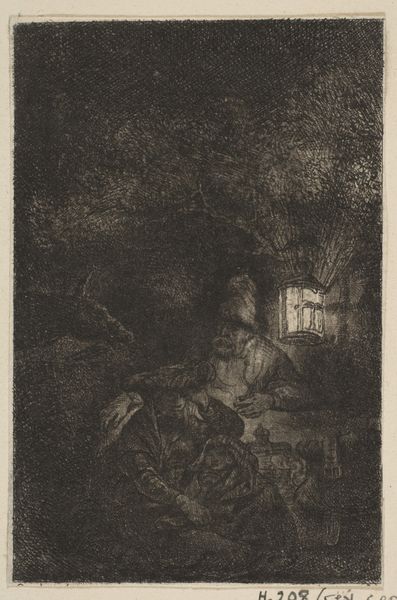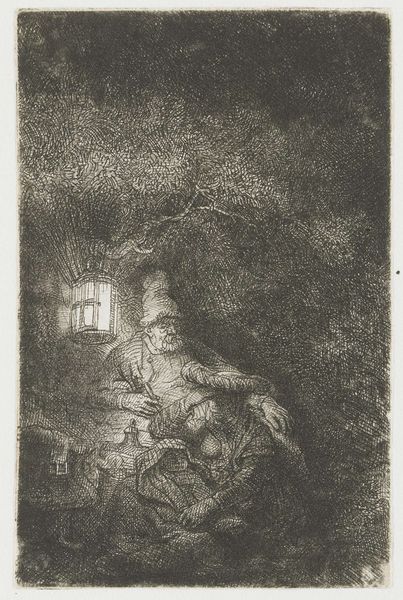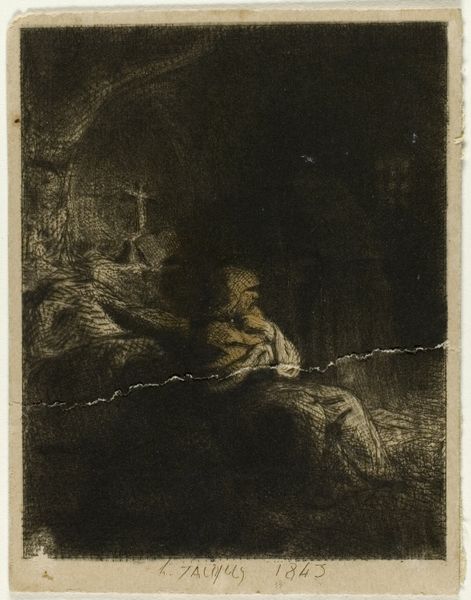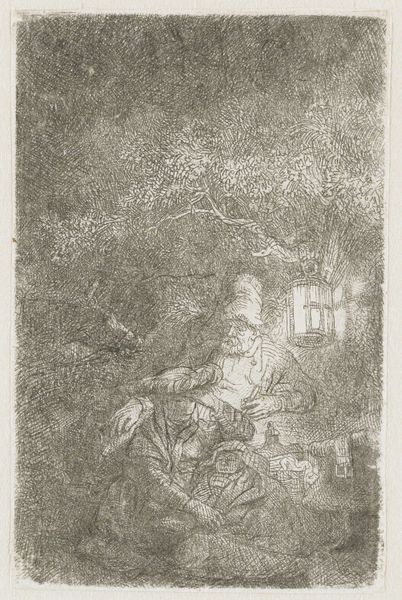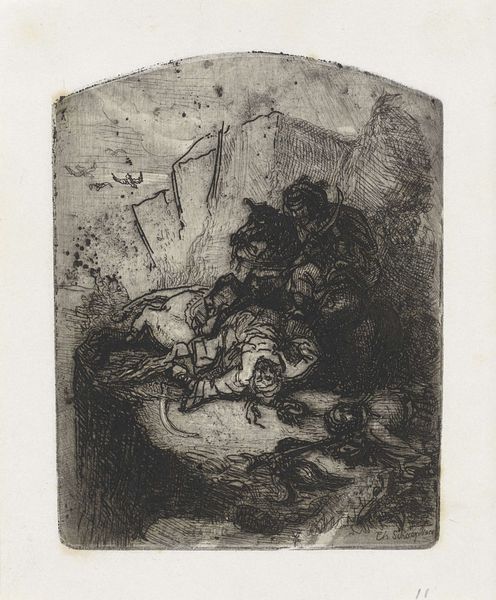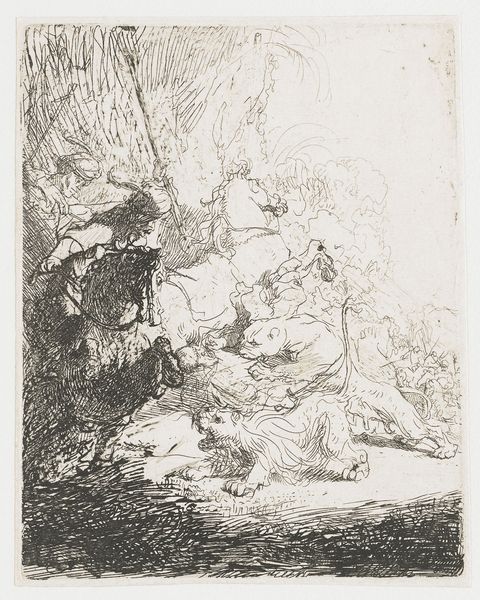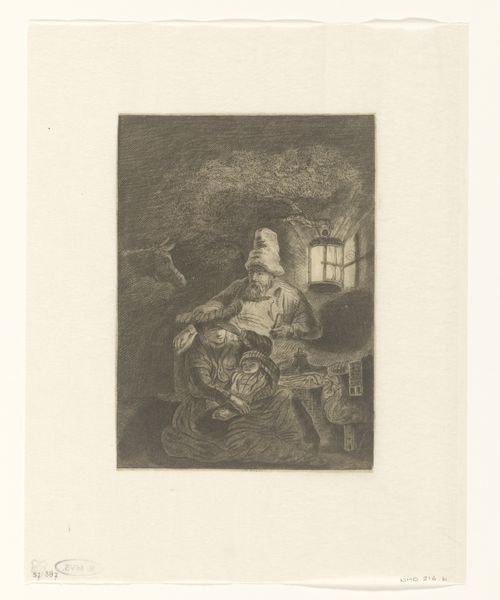
print, etching
#
narrative-art
#
baroque
# print
#
etching
#
landscape
#
figuration
Dimensions: 3 5/8 x 2 5/16 in. (9.2 x 5.9 cm) (plate)
Copyright: Public Domain
Editor: We’re looking at "The Rest on the Flight (a night piece)," an etching by Rembrandt van Rijn from 1644. It's a small print, and the darkness really struck me. How would you approach analyzing its visual language? Curator: Consider first how Rembrandt orchestrates light and shadow. Observe the density of lines that construct the shadowy areas, contrasted against the selective illumination. Note the positioning and intensity of the light source, seemingly a lantern, and how it sculpts the figures and their surroundings. Editor: So the interplay of light and dark is key. I hadn't really considered how deliberate that was. What does that specific contrast achieve? Curator: The deep blacks amplify the luminosity of the lantern, focusing our attention on the figures—perhaps the Virgin Mary and Joseph—offering them a protective glow within the vast darkness. Do you see how the diagonal lines contribute to a sense of depth? Editor: Yes, the lines do seem to pull me into the scene. I also see some horizontal lines in the lower portion. Are they creating the ground on which the figures are resting? Curator: Precisely. And consider the texture achieved through the layering of lines, creating a tactile sense of fabric and foliage. Notice the variety in the etching technique itself—how does the density and direction of the lines impact your perception of form and space? Editor: It’s interesting to consider it simply as lines and values creating depth and form, rather than just an image. Thinking about the textures adds another layer to my viewing of this work. Curator: Indeed. And ultimately, how do all these formal elements coalesce to create a coherent and impactful image? The relationship between light, line, and texture—that is the core of its expressive power. Editor: That’s a very different approach than I’m used to, but understanding the visual structure really deepens my understanding of the work's power. Thanks for that. Curator: My pleasure. A deep engagement with form always reveals something new.
Comments
minneapolisinstituteofart almost 2 years ago
⋮
Like many artists, Rembrandt portrayed the Holy Family fleeing into Egypt to escape persecution by King Herod. He gave the episode the look of everyday life, with Mary and Joseph in humble dress and consumed by the concerns of parenting. In the nocturnal print, a weary Mary tries to nurse her child, who seems to have fallen asleep. A year later Rembrandt returned to the theme but experimented with a light, delicate etching style akin to drawing. This time the family is assembled on a log, and Joseph pauses, peels an apple, and admires his infant boy.
Join the conversation
Join millions of artists and users on Artera today and experience the ultimate creative platform.
